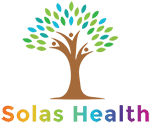
The Power of Physical Therapy and Medication for Chronic Pain
Chronic pain and related health conditions can disrupt life. Combining physical therapy with medications like gabapentin or NSAIDs can make a remarkable difference in a person’s quality of life. Alongside physical therapy, many people can improve their quality of life and return to activities they've been missing.
Let's explore how they team up to help people feel better.
Need for Better Pain Management
We're facing a crisis with opioid drugs. They're not always the safest or most effective way to manage long-term pain. Experts seek better options, like using physical therapy and medicine together.
Opioid drugs used to be the go-to for pain relief, but they have a lot of downsides. They can be addictive and can also have nasty side effects, including a condition called Opioid-induced hyperalgesia (OIH) that causes users to experience hypersensitivity to pain. Opioids don't always work well for chronic pain and can even make things worse in the long run.
How Physical Therapy and Medicine Work Hand-in-Hand
Physical therapy focuses on helping people move better and feel better overall. Medicines like gabapentin target the signals that cause pain. Combining them gives you a more complete approach to managing pain and its causes.
Experts like physical therapists and doctors team up to make a plan that fits each person. This might include medicine, physical therapy, or both, depending on what works best for them.
Medication and treatment always depend on the condition being treated. For some nerve pain like diabetic neuropathy, gabapentin can help calm down nerve signals, while physical therapy can improve strength and movement. For fibromyalgia, gabapentin can ease pain, and exercises can help too. For arthritis, gabapentin can reduce pain, and physical therapy can improve joint movement and strengthen
Bringing Together Physical Therapy and Medicine
Teams of experts, including physical therapists and pain clinics, work together to ensure treatment plans fit each person's needs. Good communication and teamwork are essential for this approach to work well. Many conditions will require a multi-pronged approach planned by your physician to help restore movement, relieve pain, and build strength to prevent injuries in some cases.
Here are some of the more common conditions that require a multimodal approach:
Neuropathic Pain
Gabapentin, medications like pregabalin or anticonvulsants, can also help manage nerve pain. For some patients, drugs like amitriptyline or lidocaine patches can be effective in reducing nerve-related pain signals. Physical therapy focuses on improving strength and movement, alleviating discomfort, and enhancing mobility.
PT also may try nerve mobilization techniques and gentle exercises to help manage pain and restore function.
Fibromyalgia Syndrome
Gabapentin and medications like milnacipran may be prescribed to alleviate fibromyalgia-associated pain. Physical therapy using aerobic exercise, myofascial release, and relaxation techniques can complement medication by addressing pain amplification and promoting relaxation.
Medications such as amitriptyline or cyclobenzaprine may also help improve sleep disturbances commonly associated with fibromyalgia. Physical therapy interventions focusing on sleep hygiene education and relaxation techniques can further enhance sleep quality and overall well-being.
Osteoarthritis
Drugs like gabapentin, medications like acetaminophen, or nonsteroidal anti-inflammatory drugs (NSAIDs) can provide relief from osteoarthritis-related joint pain. Doctors may find other treatments appropriate depending on a person’s individual needs.
Physical therapy interventions such as joint mobilization, therapeutic exercises, and aquatic therapy can help improve joint mobility and reduce pain.
PT also aims to strengthen muscles around affected joints, improve flexibility, and promote proper biomechanics. When combined with physical therapy, medications like glucosamine or chondroitin sulfate can enhance joint function and quality of life in individuals with osteoarthritis.
Chronic Back Pain
Medications like NSAIDs, muscle relaxants, gabapentin, and anticonvulsants may alleviate neuropathic pain associated with chronic back conditions. Physical therapy interventions targeting muscle imbalances, posture correction, and core stabilization can help reduce pain and prevent future injuries.
PT focuses on improving functional capacity through exercises tailored to specific back pain triggers and limitations. Medications such as NSAIDs or corticosteroids, when combined with physical therapy, can assist in pain management and facilitate active participation in rehabilitation programs.
Chronic Headaches
Gabapentin and medications like topiramate or amitriptyline may help reduce the frequency and severity of chronic headaches by modulating pain pathways. Physical therapy interventions such as manual therapy techniques, neck exercises, and posture correction can address musculoskeletal contributors to headache symptoms.
Physical therapy also incorporates stress-reducing techniques such as relaxation exercises and biofeedback to complement medication effects on headache management. Medications such as beta-blockers or selective serotonin reuptake inhibitors (SSRIs), when combined with physical therapy, can address both physical and psychological aspects of headaches, improving symptom control and quality of life.
Each Pain Patient’s Path Is Different
Many painful conditions can be managed with PT and medication. Physical therapy and medication management can offer comprehensive relief and improved outcomes for individuals living with chronic pain conditions.
By combining physical therapy with medicine, we can better manage chronic pain and help people with long-term health issues live better lives. When experts work together and use the best methods available, we can improve pain relief, movement, and quality of life for those dealing with chronic conditions.
Getting Help for Pain in North Carolina
Do you need help in North Carolina?
Chronic pain can be overwhelming, but at Solas Health, we're dedicated to helping you find relief without relying on opioids. Our team understands the complexities of pain management and offers a range of non-opioid treatments tailored to your individual needs. Whether it's physical therapy, medication management, or cognitive-behavioral therapy, we work closely with you to develop personalized care plans to reduce pain and improve your quality of life.
With Solas Health by your side, you can embark on a journey toward lasting pain relief and a brighter, opioid-free future. Call 910-295-7246 to learn more.
If you are in need of help, please call us at: 910-295-7246 or message us.
Categories
Uncategorized
